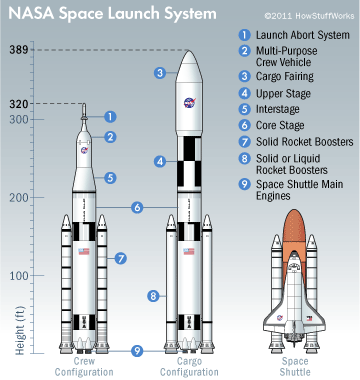Engine tested for use on NASA’s future monster rocket
August 14, 2015
A space shuttle era rocket engine roared to life at the John C. Stennis Space Center in Mississippi in a nine minute test evaluating its performance for NASA’s next generation deep-space launch vehicle.
The test occurred just after 4 p.m. on Aug. 13, 2015, on the A-1 test stand. It was the sixth of seven planned tests which were designed to gather information to qualify the engine for use on the Space Launch System, NASA’s deep-space launch vehicle, due for its first launch 2018.
The RS-25 is one of two developmental and 16 flight worthy engines retained from the Space Shuttle Program.
“Those 16 engines come with over a million seconds of hotfire experience,” said Tom Martin, project manager for Advanced Space and Launch at Aerojet Rocketdyne, before the test. “It is the most tested engine in the world.”
During the test, the engine fired for 535 seconds, the time it would fire during an actual flight to space. It consumed 350 gallons of its cryogenic liquid propellent per second, exiting the nozzle at 13 times the speed of sound. It produced more than a half-million pounds of thrust to verify upgrades to the engines will allow it to power the huge SLS off the planet.
“The amazing thing about the RS-25 is the amount of energy that is packed in such a small machine,” Martin said, “It’s literally at the edge of engineering.”
The engines were originally designed in the 1970s to power the space shuttles to orbit. They were very successful during the 135 space shuttle flights with no major issues. They were reusable and many flew to space multiple times.
“Why do we test the engines?” said Steve Wofford, SLS engines manager. “It’s a stable design, it’s a mature design, we have the engines in hand, and most of them have flown before, [but] there are some new things that we had to develop and certify.”
Dava Newman, NASA deputy administrator, also present for the test, said this is part of NASA’s plan to send people to Mars in the 2030s.
“All roads to space lead through Stennis in Mississippi,” Newman said, quoting NASA Administrator, Charles Bolden. “Everything has to come here to get us started.”
Newman went on to explain that NASA needs to go to what she called the “proving ground” of cislunar space in order to test space hardware and techniques for eventual deep-space missions to Mars. She said the Space Launch System is key to that plan.
After the test, Wofford said he felt elated.
“We met our test objectives [and] didn’t note any anomalies at this time,” Wofford said, “So now we get the fun part of going through the data.”
The final test in this series is scheduled to take place on Aug. 27, 2015. A full hotfire test with four of the engines attached to the the SLS core stage is expected at Stennis sometime in late 2017.



